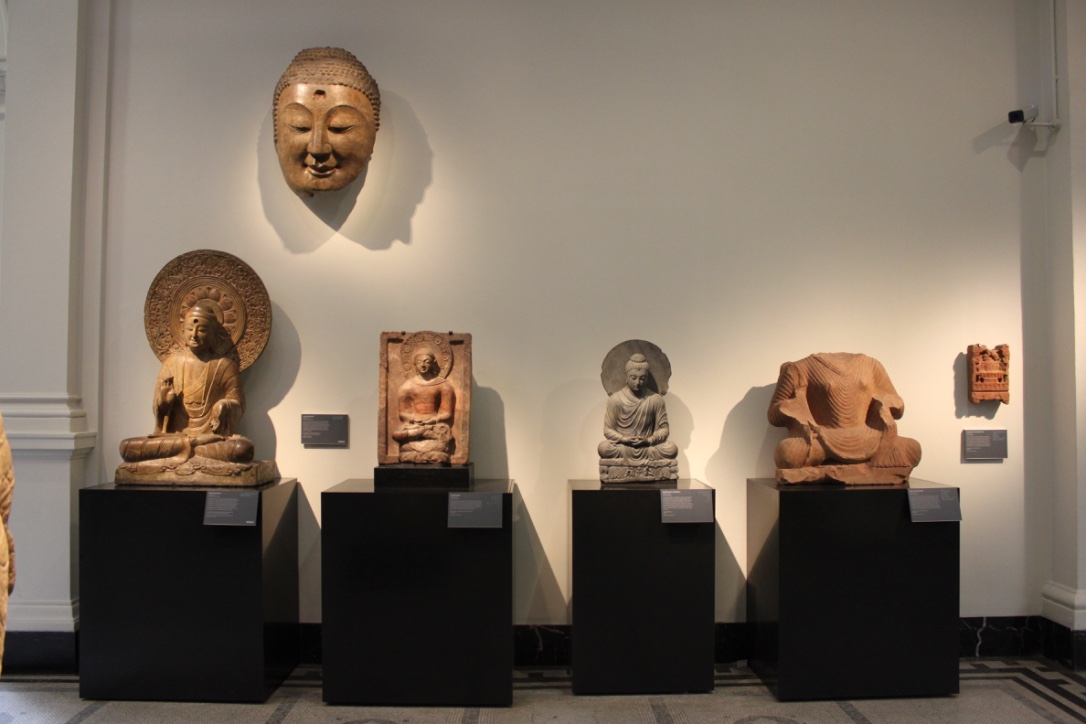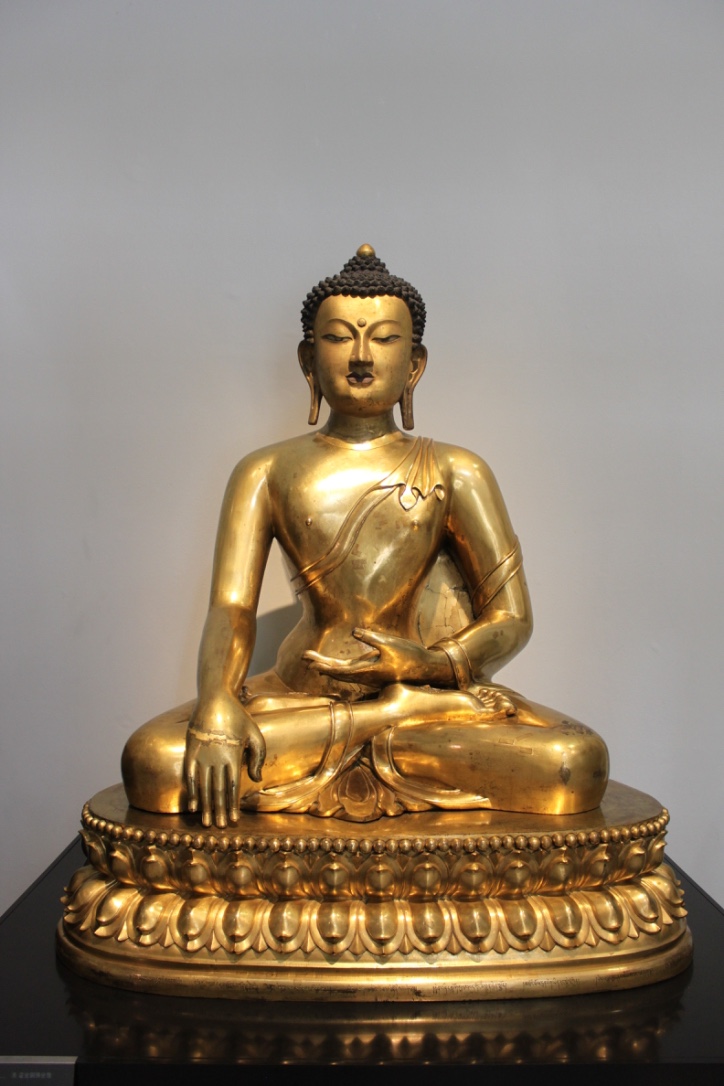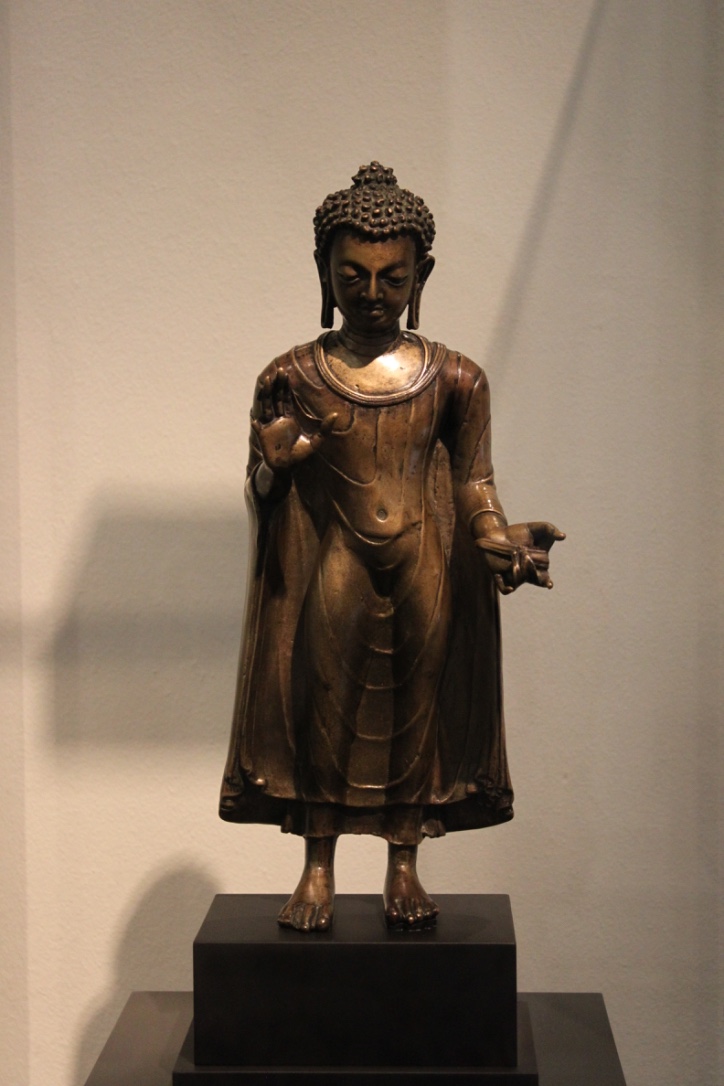The Robert H. N. Ho Family Foundation Galleries Of Buddhist Art
From Londonhua WIKI
Buddha Exhibit
 "The hallway containing The Robert H. N. Ho Family Foundation Galleries Of Buddhist Art"
"The hallway containing The Robert H. N. Ho Family Foundation Galleries Of Buddhist Art"
Overview
Along with The Robert H. N. Ho Family Foundation Galleries Of Buddhist Art, there are also three other rooms displaying Buddha in Art, but this page focuses on the exhibit of Buddha through Asia located on the main floor of the Victoria and Albert Museum.
Contents
Background
Buddha lived between 485 and 405 BC with his followers believing he achieved enlightenment (which may be defined as the ultimate state of awareness). Upon his death, he became recognized as the footprints on an empty throne. Thanks to Merchants and Monks, the later human embodiment of the Buddha was spread throughout Asia. While different areas had different techniques they all included what is called the wisdom bump, the ushnisha, on top of his head to represent Buddha's divine wisdom.
Buddha Wall

From left to right:
1. Buddha Shakyamuni AD 550-577 found in North China
2. Head of the Buddha AD 550-577 found in North China, only the head remains from the great sculpture that was found in a temple which would have been directly carved out of the limestone and oversaw the worshippers.
3. Seated Buddha AD 400-600 from Pakistan, is similar to the "Buddha Shakyamuni" through similar round faces and flower decorations. This is just proof how ideas traveled through Central Asia via China.
4. Buddha Seated in Meditation AD 200-400 also found in Pakistan, shows the Buddha in a seating position where they are meditating. It has Greek influence through the facial features and robes, which can be related to Alexander the Great conquers.
5. Torso of Seated Buddha AD 200-250 found in North India is demonstrated the typical expanded chest and raised hand pose of Buddha.
6. The Adoration of the Empty Throne AD 100-300 found in North India, this is representation of the Buddha before he was transformed into human figure. The empty thrown had become his symbol after his death.
China Buddha

With Tibetan artwork along the bottom it is suggested this Buddha had once been home to a Tibetan Temple, but for now on display across the wall to the above Buddhas. It was many year later in 1735-1786 in China or Tibet.
India Buddha

This Buddha statue made of copper alloy is a small figure that is standing in the typical Buddha pose with the one hand raised allaying fear. Again, it is clear it's Buddha through the webbed feet, curled hair, and ushnisha.
References
The V&A Museum.